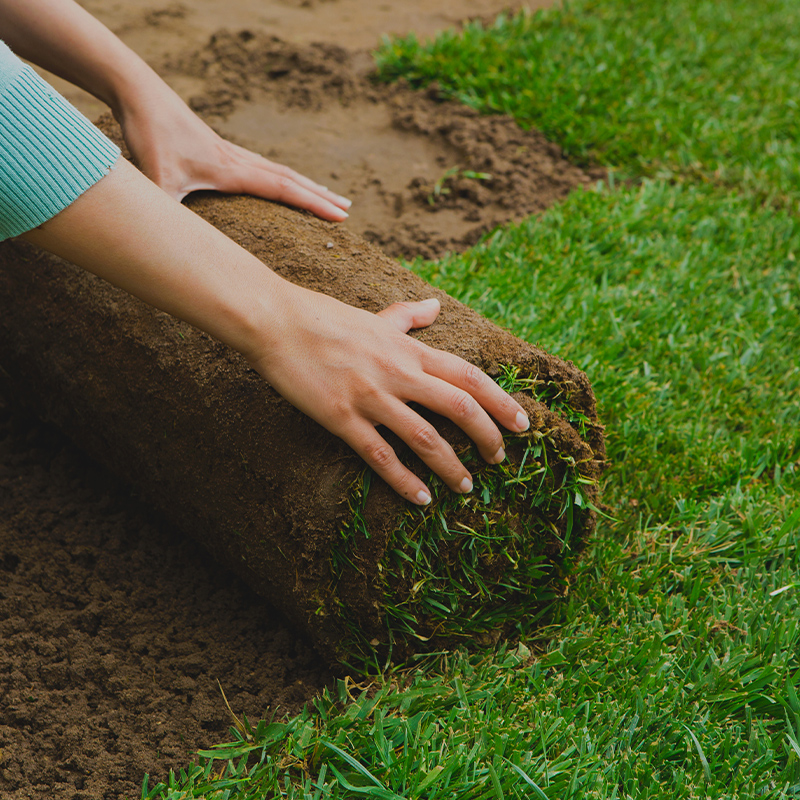
Guide to laying turf
When it's time to refresh your lawn, laying turf is the quickest possible way to revitalize your garden. Rather than sowing seed, which can take weeks to grow, turf (available seasonally in our landscapes depts at Webbs garden centres) provides instant results and is easy to lay. If you aren't sure where to start, this is the guide for you.
When is the best time to lay my turf?
You can lay turf at any time of the year, as long as the ground is not waterlogged, muddy, frozen solid or dry. Preparation is key for turf to establish itself and begin rooting. Spring and autumn tend to be the best times to lay fresh turf, the ground is better at this time with softer soil, and increased rainwater during these seasons is an added benefit. You can also let the turf do it's thing without needing to mow the lawn as frequently as in summer months.
Preparing your garden for laying a lawn
Preparation is the most important part of creating a perfect lawn, taking time at this stage will make all the difference to the growth and nourishment of the lawn. You need to create a level surface before laying your turf to ensure a good finish and healthy grass. Remove any old grass, weeds or roots as well as stones and other debris. Flatten any lumps and bumps and fill in any hollows. Rake the soil to break it up and create a level surface, then tread the area using your body weight on your heels to get rid of air pockets. This will also prevent sinking later down the line. You may like to sprinkle granular fertiliser over the soil and rake it in at this stage. Water the soil so that it is moist (but not too muddy!).
How to lay your turf
Start at the far edge of your new lawn area, lay the first piece by matching the edges, and then unrolling the turf gently. Pat down the turf using your hands to get rid of air pockets and make sure the roots are in solid contact with the soil underneath. Continue along the row to create your border, leaving no gaps between the pieces. Put planks of wood along the row to stand on and work from so that you don't disturb the soil. Start laying your second row, staggering the edges to create a brick wall effect. Leave no gaps between the rows.
Creating edges
To create a straight edge, place a plank so that the edge is where you want the turf to end, use your spade or a sharp knife to cut away the excess turf. For a curved edge, instead of using a plank, try laying the garden hose in the desired shape and again using your spade or a sharp knife, cut away at the excess turf. Add a handful of soil around the edges to prevent the edges from drying out after cutting.
Water, water, water!
Your turf needs water to help the roots establish and connect with the soil below. Set up a lawn sprinkler for an hour or give it plenty of water using a watering can with a rose attachment. Make sure the whole lawn gets a good watering. Daily watering is essential in the first couple of weeks, especially in dry weather. If the weather is hot it is best to water early in the morning or later in the evening to stop the water from evaporating. Don't water too much, over-watering can be just as damaging to your new lawn as not watering enough. The underside should be moist but not soaking wet!
Keep off the turf
It takes time for roots to bed into the soil, so avoid walking on it. This could be for a number of weeks but you will know when the turf has rooted as you'll no longer be able to lift the turf up as easily. Keep pets off turf too. Once the grass has grown to 2 inches and is growing vigorously it should be fine to mow, ensure the turf will take the mower's weight without leaving an impression, and have the blades set high - little and often is key.


